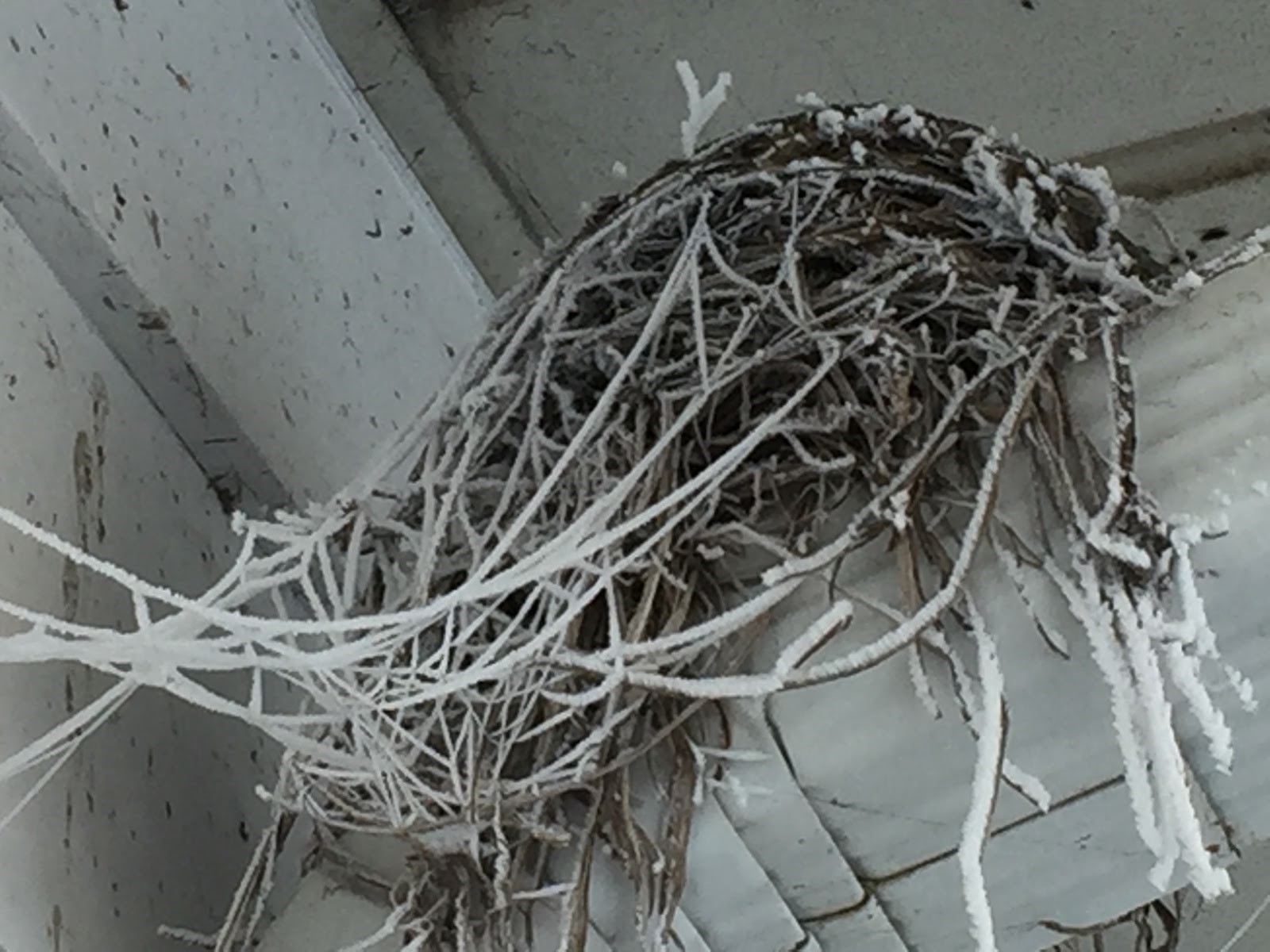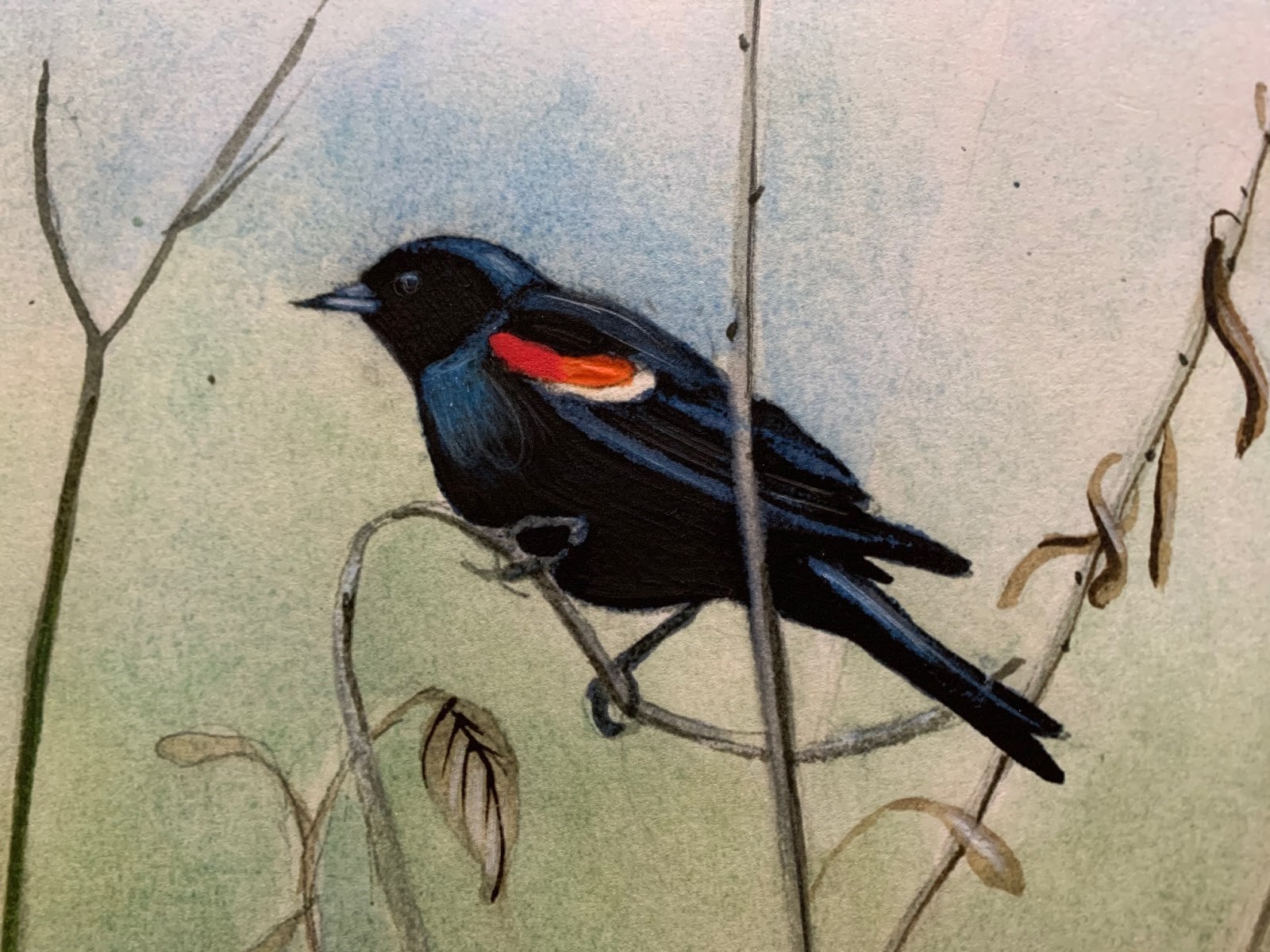Connected While We Are Apart
What Are We Waiting For?

There was a considerable wait from the morning when I discovered this hoarfrost-covered nest perched on the drainpipe on the front of the parsonage in February 2018 and the hatching of the first baby robins in the spring to come. I knew the nest well. It or others in the same location had been occupied by robins season after season. Never had such beautiful attention been lavished on this nest in the off season, way out of synch with the time when new life would appear. Robins’ nests are always a messy affair with long strands of building material hanging below them this way and that. The untrimmed excess made the waiting winter nest even more stunning.
Our waiting is not nothing. It is something — a very big something — because people tend to be shaped by whatever it is they are waiting for. (Barbara BrownTaylor)
Dear Mayfield,
During the first three weeks of Advent, I have focused on numerous traditional words associated with the season — be ready, wake up, watch, be alert. The missing big Advent word from my words thus far is wait. Advent is the season of waiting and restraint before the celebration of Christmas. Advent waiting is an echo of the centuries long desire of the ancient Hebrew people for Messiah. With an infant child at the center of the narrative, Advent waiting reflects the inevitable waiting of every pregnancy. Expectancy is all about waiting. Throughout most of 2020, so much waiting has been excruciating. When, oh when will _____________(fill in the blank) be over or done?
In the northern hemisphere, where spruce, pine, and fir are native, birds aren’t nesting during Advent in anticipation of the Christmas holiday. And yet ever since I was a child, I have heard the old legend of what good luck it is to get your Christmas tree home from the lot or from a hike in the woods to cut it, only to find there’s a bird’s nest in it, usually frozen in place. That happened at least once during my childhood and several other times since then. I have a lovely, small, creamy-white, porcelain bird’s nest ornament cradling three blue eggs that I hang on the tree every year to make sure there is good luck present. That ornament actually looks a bit like the hoarfrost-covered nest from February 2018 without the wild fringe on the bottom.
One of my favorite Irish saints is Saint Kevin. As the story goes, his prayer practice was to stand in his small room with his arms extended out from his sides, palm up. At least one of his arms protruded out the window. One day during his time of prayer, a blackbird arrived with a cache of twigs, straw, and bits of string and began to weave a nest in the center of his open palm. Saint Kevin waited out the time necessary for eggs to be laid and to hatch, in his continuous posture of prayer. The poet Christine Valters Paintner (The Wisdom of Wild Grace) asks us this in the spirit of Saint Kevin:
“How many days can you stay,
open,
waiting for the shell
to fissure and crack,
awaiting the slow emergence
of tiny gaping mouths
and slick wings
that need time to strengthen?
Are you willing to wait and watch?
Not to withdraw your
affections too soon?”

Such questions ooze from the story of Saint Kevin as they do from our annual Advent journey. Going back to the Barbara Brown Taylor quote above, do we know what we are waiting for and are we willing to be shaped by the intent and the direction of our waiting? What if the waiting is long and hard and we ache for it to be completed? What if the end of the waiting is so slow in becoming visible? In this pandemic year with layers and layers of turmoil, what are we learning about waiting, and what does our resolve to hatch, to bear into birth fresh incarnations of holy love, look like? These are big questions. They are essential questions. Indeed, they can be exhausting questions. To sustain us in the waiting, I offer a beautiful winter nest encrusted in hoarfrost and the tale of a saint who accompanies us in all our waiting.
Peace, Martha

